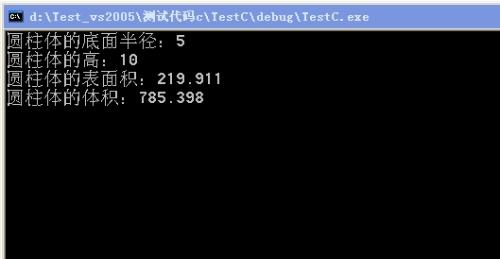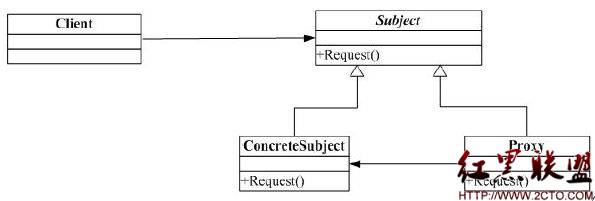S5PV210(TQ210)学习笔记——按键驱动程序
经过前面的配置,S5PV210开发已经可以成功进入Linux控制台了,那么,有了这个环境就可以开始学习Linux驱动的编写和测试了。学习Linux设备驱动,通常是从字符设备驱动开始。我写的第一个驱动程序是Led的,其实也就是熟悉下字符设备驱动的基本结构,本文以中断方式的按键驱动为例,简单的介绍下字符设备驱动程序。
一 按键驱动程序的简单实现
下面是基于中断和消息的按键驱动程序,其工作原理是:当应用程序读取键值时,会调用按键驱动程序的read函数,而我们实现的read函数检测完读取长度后没有直接读取键值而是等待按键消息,如果没有按键,程序会进入休眠状态,这样可以节省大量的CPU,而当我们按键时硬件会产生中断,程序自动进入中断处理函数,在中断处理函数中,驱动程序读取键值存入全局变量并激活read函数中等待的消息,应用程序被迅速唤醒并通过read函数读取键值,如此,完成了获取键值的工作。下面是源码,比较简单,也就不多说了。
源码:
[cpp]
#include <linux/types.h>
#include <linux/module.h>
#include <linux/cdev.h>
#include <linux/fs.h>
#include <linux/device.h>
#include <linux/gpio.h>
#include <linux/irq.h>
#include <linux/interrupt.h>
#include <linux/sched.h>
#include <linux/wait.h>
#include <linux/uaccess.h>
static dev_t devno;
static struct cdev cdev;
static struct class* buttons_class;
static struct device* buttons_device;
static wait_queue_head_t button_waitq;
static volatile int pressed = 0;
static unsigned char key_val;
struct key_desc{
unsigned int pin;
unsigned char value;
};
static struct key_desc key_descs[8] = {
[0] = {
.pin = S5PV210_GPH0(0),
.value = 0x00,
},
[1] = {
.pin = S5PV210_GPH0(1),
.value = 0x01,
},
[2] = {
.pin = S5PV210_GPH0(2),
.value = 0x02,
},
[3] = {
.pin = S5PV210_GPH0(3),
.value = 0x03,
},
[4] = {
.pin = S5PV210_GPH0(4),
.value = 0x04,
},
[5] = {
.pin = S5PV210_GPH0(5),
.value = 0x05,
},
[6] = {
.pin = S5PV210_GPH2(6),
.value = 0x06,
},
[7] = {
.pin = S5PV210_GPH2(7),
.value = 0x07,
},
};
static irqreturn_t buttons_irq(int irq, void *dev_id){
volatile struct key_desc *key = (volatile struct key_desc *)dev_id;
if(gpio_get_value(key->pin)){
key_val = key->value|0x80;
}
else{
key_val = key->value;
}
pressed = 1;
wake_up_interruptible(&button_waitq);
return IRQ_RETVAL(IRQ_HANDLED);
}
static int buttons_open(struct inode *inode, struct file *file){
int ret;
ret = request_irq(IRQ_EINT(0), buttons_irq, IRQ_TYPE_EDGE_BOTH, "key1", &key_descs[0]);
if(ret)
return ret;
ret = request_irq(IRQ_EINT(1), buttons_irq, IRQ_TYPE_EDGE_BOTH, "key2", &key_descs[1]);
if(ret)
return ret;
ret = request_irq(IRQ_EINT(2), buttons_irq, IRQ_TYPE_EDGE_BOTH, "key3", &key_descs[2]);
if(ret)
return ret;
ret = request_irq(IRQ_EINT(3), buttons_irq, IRQ_TYPE_EDGE_BOTH, "key4", &key_descs[3]);
if(ret)
return ret;
ret = request_irq(IRQ_EINT(4), buttons_irq, IRQ_TYPE_EDGE_BOTH, "key5", &key_descs[4]);
if(ret)
return ret;
ret = request_irq(IRQ_EINT(5), buttons_irq, IRQ_TYPE_EDGE_BOTH, "key6", &key_descs[5]);
if(ret)
return ret;
ret = request_irq(IRQ_EINT(22), buttons_irq, IRQ_TYPE_EDGE_BOTH, "key7", &key_descs[6]);
if(ret)
return ret;
ret = request_irq(IRQ_EINT(23), buttons_irq, IRQ_TYPE_EDGE_BOTH, "key8", &key_descs[7]);
if(ret)
return ret;
return 0;
}
static ssize_t buttons_read(struct file * file, char __user *data, size_t count, loff_t *loff){
if(count != 1){
printk(KERN_ERR "The driver can only give one key value once!\n");
return -ENOMEM;
}
wait_event_interruptible(button_waitq, pressed);
pressed = 0;
if(copy_to_user(data, &key_val, 1)){
printk(KERN_ERR "The driver can not copy the data to user area!\n");
return -ENOMEM;
}
return 0;
}
static int buttons_close(struct inode *inode, struct file *file){
free_irq(IRQ_EINT(0), &key_descs[0]);
free_irq(IRQ_EINT(1), &key_descs[1]);
&
补充:软件开发 , C++ ,




